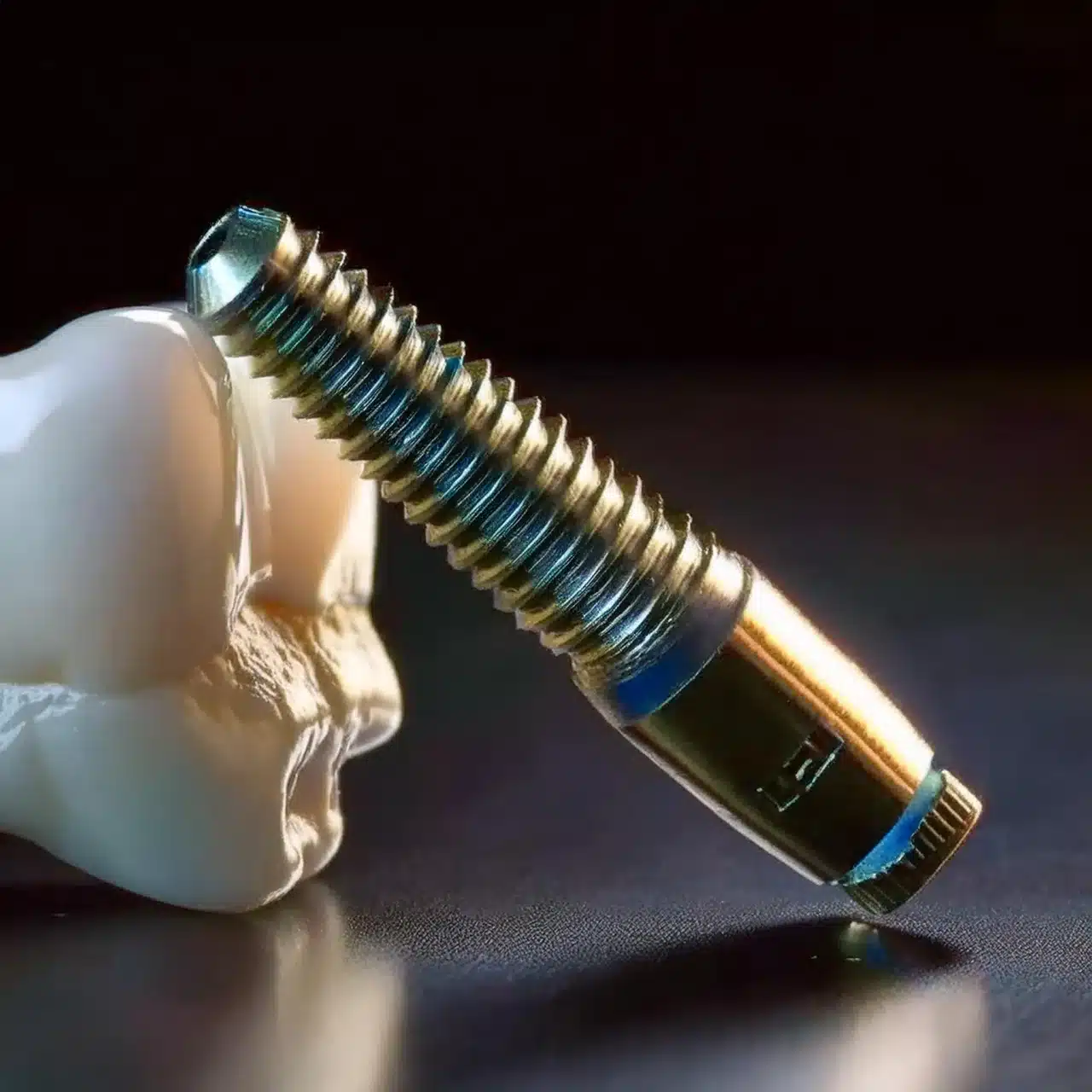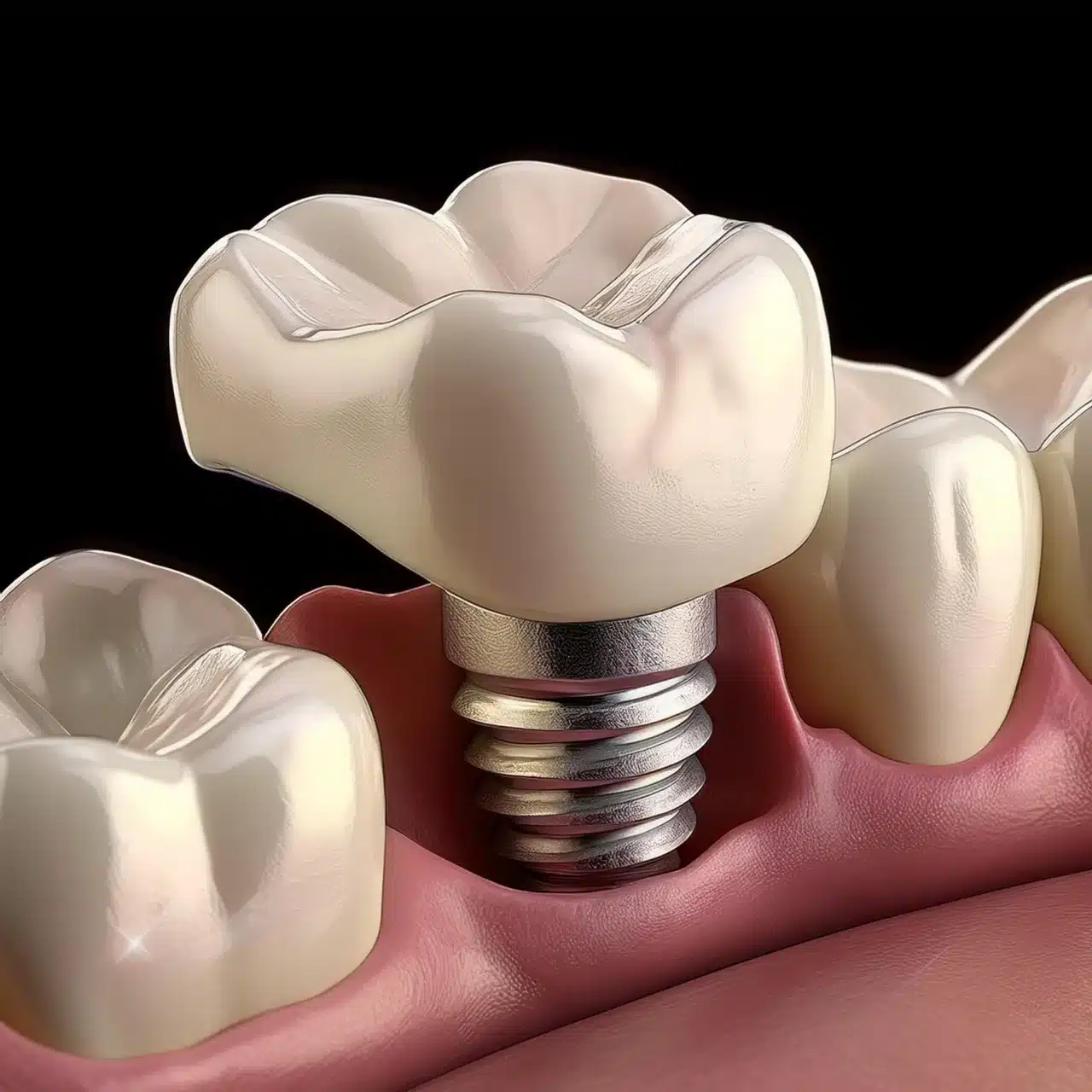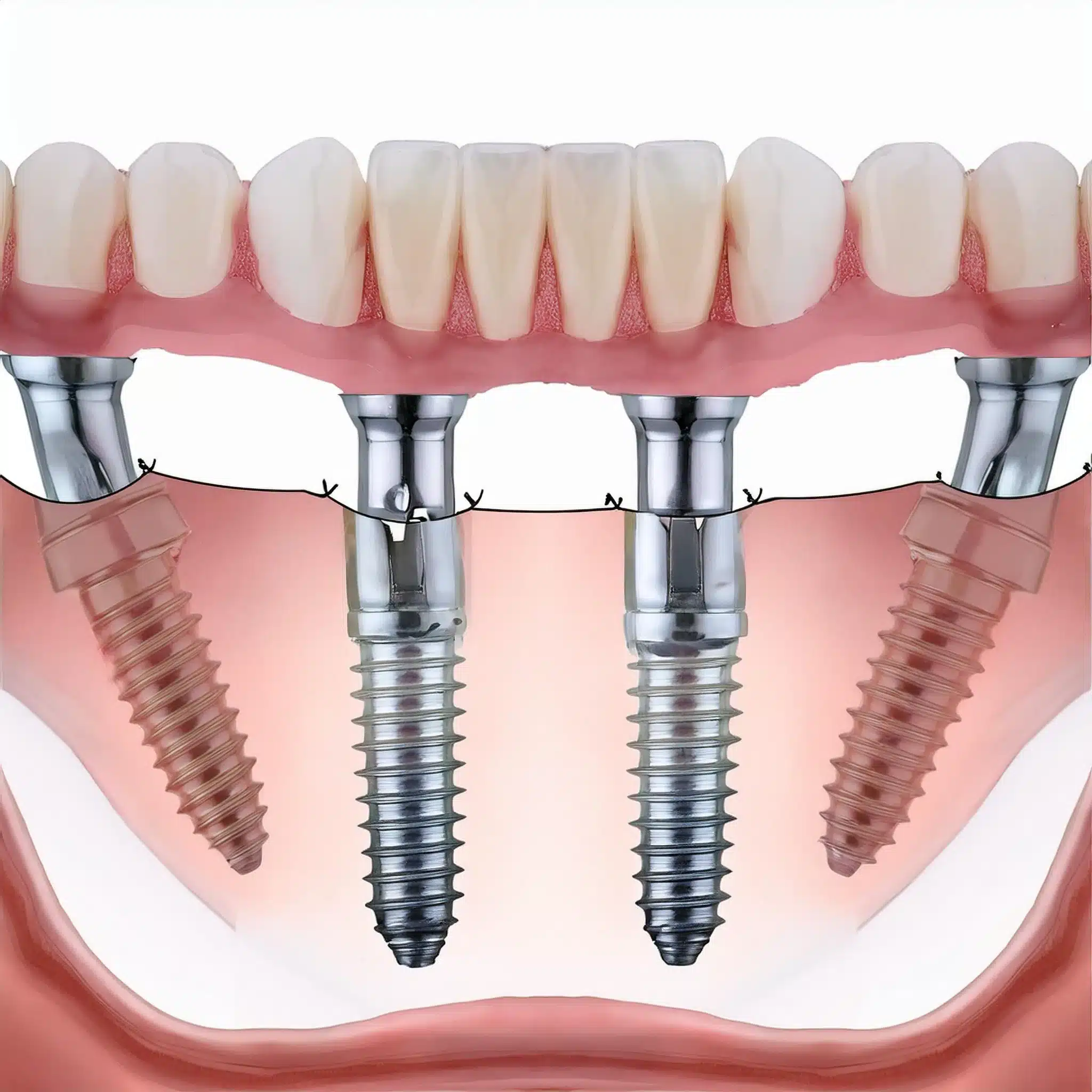When choosing a restoration option, the implant vs. crown debate leaves patients wondering which is best for them.
With cost, invasiveness, and long-term results in mind, it’s important to know the differences between these two popular solutions.
What’s the difference between implants and crowns?
Implants and crowns are two popular tooth restoration options, each with it’s own benefits and drawbacks. Implants are a permanent solution; they look and function like natural teeth, with a 90-95% success rate.Prevent bone loss, support the jaw, encourage new tissue growth.Expensive and surgical. Crowns are less invasive and cheaper but need to be replaced over time.
| Aspect | Implants dentaires | Couronnes |
|---|---|---|
| Purpose and Use | Replace the entire tooth | Cover a damaged tooth |
| Components and Structure | Titanium root and a crown | Placed over a natural tooth |
| Treatment Time and Process | Require surgery and a healing period | Less invasive, completed in two dental visits |
| Invasivity and Recovery | Involve surgery, require recovery time | Do not involve surgery, less recovery time |
Implants vs. Crowns
Implants: Pros and Cons
When considering dental restoration options, the debate between dental implants and crowns, as well as the comparison of dental implants vs bridges, often leaves patients wondering which choice is best for their unique needs.
Implants are the popular choice for those who want a permanent tooth replacement. Here are the pros:
Permanent: Designed to last a lifetime with proper care, stable and durable.
Aspect et sensation naturels: Look and feel like natural teeth, aesthetics and function.
Préservation des os: Prevents bone loss by stimulating the jawbone, which is important for facial structure (1).
Taux de réussite élevé: 90-95% success rate (2)

But here are the cons:
Coût: Implants are more expensive than crowns, €1,000-€3,000 per implant.
Procédure chirurgicale : Requires surgery, which can be invasive and requires healing time.
Complications: Risk of complications like infection or implant failure, especially with certain health conditions (3).

Crowns: Pros and Cons
Crowns are another option for those with damaged teeth. Here are the pros:
Moins invasif: Unlike implants, crowns are not surgical and less invasive.
Moins cher: Crowns are cheaper than implants, €500-€1,500.
Quick: The process of placing a crown is quick—2 dental visits.
But:
Durabilité: Crowns need to be replaced every 5–15 years, depending on the material and care.
Tooth preparation: The natural tooth needs to be filed down to fit the crown, which can weaken it over time.
Decay: If not fitted properly, crowns can cause decay at the margin where the crown meets the tooth.

Dental Implant Alternatives: When to Choose dental Crowns
Considering les alternatives aux implants dentaires:
Cosmetic
Crowns are the choice when the main concern is cosmetic.
They can cover discolored or misshapen teeth and give a uniform and beautiful appearance.
Unlike implants, which replace the entire tooth, crowns preserve the natural tooth structure, making them ideal for those who want a less invasive cosmetic solution.
In a study on patient satisfaction, 85% of patients reported a big improvement in their smile aesthetic after crowns (4).

Partial Tooth Damage
For partial tooth damage, crowns are the solution.
They can restore function and appearance of a chipped or cracked tooth without extraction.
Crowns are good for teeth that have had root canal treatment and give strength and protection.
According to a clinical study, crowns restored function in 92% of cases of partial tooth damage, proves they can save natural teeth (3).

Implant vs Crowns
Initial Cost
When looking at the initial cost, crowns are the more affordable option.
The cost of a dental crown is €500-€1,500 depending on the material and complexity of the procedure.
Implants are much more expensive, €1,000-€3,000 per implant.
This is due to the surgical procedure and the material used, titanium for the implant post(1).

Long-Term Cost-Effectiveness
Although the initial cost of implants is higher, they are more cost-effective in the long run.
Implants are designed to last a lifetime with proper care; there is no need for frequent replacements.
In a study on the longevity of dental restorations, implants had a survival rate of over 90% after 10 years; crowns need to be replaced every 5–15 years (2).
This longevity can mean lower overall cost in the long run, especially when you need to replace multiple crowns.
For those who want a long-term solution, investing in implants may be more value for money despite the higher initial cost.
| Aspect | Implants dentaires | Couronnes |
|---|---|---|
| Initial Cost | €1,000 to €3,000 per implant | €500 to €1,500 |
| Long-Term Cost-Effectiveness | Designed to last a lifetime, reducing need for replacements | May need to be replaced every 5 to 15 years |
Conclusion et enseignements clés
Principaux enseignements :
Implants are a permanent solution with a high success rate, no bone loss, and support the jaw.
Crowns are less invasive and cheaper but need to be replaced over time.
Implants are more expensive and require surgical procedures; crowns are less invasive.
Choice between implants and crowns depends on individual needs, cost, invasiveness, and long-term effectiveness.
Conclusion :
In summary, knowing the difference between implants and crowns is key to making an informed decision for tooth restoration.
By understanding the pros and cons of each option, patients can choose the best for their needs and get optimal oral health and aesthetics.
FAQ
Références
Cho JM, Jo H, Jo HG, et al. Long-term steroid therapy and Denosumab treatment leading to peri-implant medication-related osteonecrosis of the jaw: a case report. J Dent Implant Res. 2024;43(3):27-32.
Article : Thérapie stéroïdienne à long terme et traitement par Denosumab conduisant à une ostéonécrose de la mâchoire liée aux médicaments péri-implantaires : un rapport de casLee HS, Kim TW, Moon IS, et al. A retrospective study on the factors associated with marginal bone loss of short implants placed in posterior regions. J Dent Implant Res. 2023;42(3):46-52.
Article : Une étude rétrospective sur les facteurs associés à la perte d'os marginal des implants courts placés dans les régions postérieuresKang TG, Shin YJ, Park KS, et al. Immediate implant placement with nasopalatine duct cyst enucleation: A case report. J Dent Implant Res. 2023;42(4):53-59.
Article : Immediate implant placement with nasopalatine duct cyst enucleation: A case reportPark IS, Kim YK, Kim JC, et al. Immediate implantation via a minimally invasive approach in aggressive periodontitis of the posterior maxilla using the MagiCore implant–3 case reports. J Dent Implant Res. 2023;42(3):35-45.
Article : Immediate implantation via a minimally invasive approach in aggressive periodontitis of the posterior maxilla using the MagiCore implant–3 case reports


